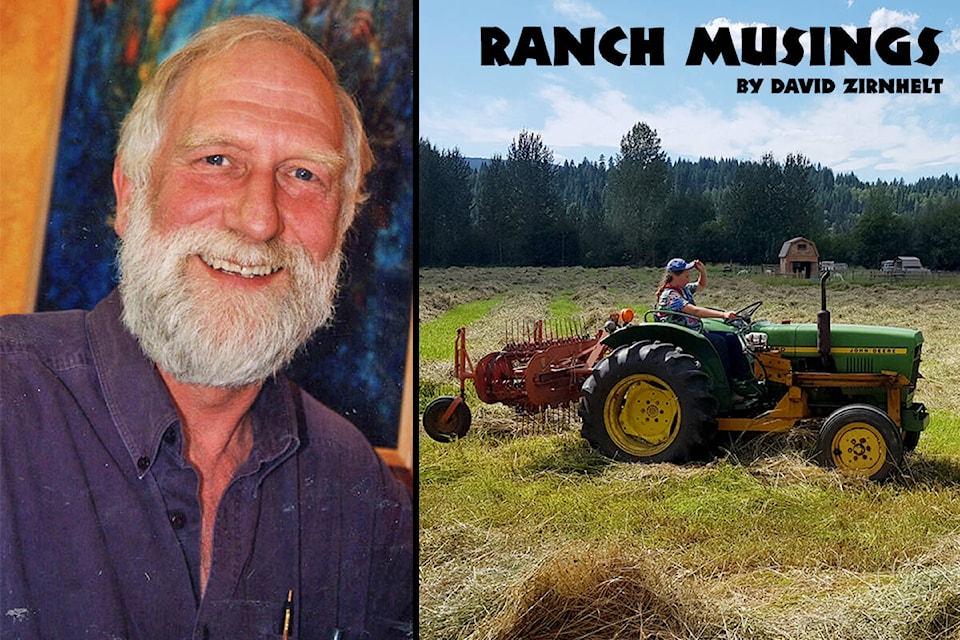While some long-term forecasters have called for a mixture of cool and warm this spring with some two-week periods being above and below long -term averages, here I am relying on the good old Farmer’s Almanac. I haven’t fact checked them, but they claim they spend the most of any agency on forecasting data.
The way I read it, we ranchers and farmers have to be ready for a mixture of wet and dry this spring and summer — maybe enough of each at the right time to produce a modest forage crop (hay). If you can’t do your haying when there are two-week periods of good drying weather, you may have to down tools for the rain to clear. Nothing new here, but for the last three or four years we have had extremes in heat including smokey conditions which are not good for people working outside.
Because we have a short growing season in the “near” north, we need to have rain in the early spring then enough heat to grow the crop without forcing it quit growing and bolt to seed because of extended drought.
We also have to be ready for both extremes over the year.
Take this past winter, extreme cold (below -20 C.) requires more good quality cow feed to meet their nutritional needs. Lots of straw alone won’t provide this. The 2021 heat dome is another example of climate extremes.
Here are some key points to reduce heat stress in cattle, by the University of Nebraska-Lincoln.
• Supply access to abundant fresh water. For every 1,000 lb of weight, cattle can require at least 20 gallons of water per day when the ambient temperature is above 26.6C
• Provide sprinklers to wet pen floor. Use sprinklers with large droplet size to keep pen floor and mounds cool for cattle to rest on.
• Provide shade in pens. Shading has shown to reduce solar heat load by as much as 12C for cattle resting under it.
• Allow airflow. Move cattle away from windbreaks and allow as much airflow through the pens as possible during high heat and humidity events.
I remember putting spreaders on the lines attached to hames of work horses so they can spread from their mate and don’t stand directly next to another hot body.
I still have the spreaders made by my grandfather. My uncle had me make tongues for the mowers made with a jog of six to eight inches to allow the team to spread apart. If one looks in the birch groves, the trees will often have a jog at the butt. These he dried slowly, above where the horses were in the barns so the horses could aid in drying green wood with their heat and moisture to slow down the curing. Or the green tongue stock can be placed under loose hay in a loft which put up right will give off moisture.
• Land covered with vegetation- can shade help cattle lower their temperatures.
• Avoid additional stress such as processing cattle in early mornings. If cattle need to be handled, it is recommended to do it during early mornings before 10 a.m.
There we have it: science or evidence-based advice, along with a tale of our family’s experience. This won’t be news to commercial operators, but the many small holders may benefit. I will be watching.
Good luck in being good at pivoting your production and management and growing crops which produce net increases in soil carbon and organic matter which will hold moisture that we might be blessed with.
